Journalist Report – June 3rd
June 03, 2024, by Jordan Bimm
What life is out there? This question unites astrobiology, the field devoted to searching for extraterrestrial life, and our Martian Biology program at MDRS. Founded in 2019 by Dr. Shannon Rupert, an ecologist and Director Emeritus of MDRS, the Martian Biology program conducts non-sim biodiversity surveys of different field sites reachable from the Hab. We do this to establish a scientific understanding of what’s out there. Not on Mars, but around MDRS. What vegetation, insects, and animals exist in the desert south of the San Rafael Swell? What can an inventory of these forms of life tell us about our Station’s surrounding ecosystems and our planet’s environment?
Now beginning our fourth mission at MDRS, the crew (Crew 298) of Martian Biology IV consists of Shannon Rupert, Paul Sokoloff, a botanist at the Canadian Museum of Nature, Samantha McBeth, a field biologist, Jacopo Razzauti, a PhD candidate in neuroscience at Rockefeller University, Olivia Drayson, a PhD candidate in environmental toxicology at UC Irvine, and me, Jordan Bimm, a space historian and professor of science communication at the University of Chicago. Previous missions in 2019 (Crew 210), 2022 (Crew 243), and 2023 (Crew 282) have focussed on sites located close to the Hab accessible by rovers and have expanded progressively outward using the Crew Car to build a robust and comprehensive regional inventory.
We arrived on Station on Monday June 3, and immediately set to work at a new field site called Hog Spring, 64 kilometers south of MDRS and of special interest to McBeth. McBeth’s goal is to deploy the first of six “Critter Cams,” camouflaged motion-activated digital cameras that automatically record images of wildlife. Adopting the astrobiologist’s mantra of “follow the water” we selected Hog Spring due to its flowing H2O, making it a likely destination for all kinds of local life.
McBeth’s focus this time is on macrovertebrates, mostly larger mammals, although some rodents, amphibians, and reptiles may make an appearance as well and will be welcome additions.
“Realistically, we might see racoons, coyotes, foxes, skunks and weasels,” she says. “Amazing would be images of ringtails, a cousin of the raccoon, mountain lions, or even a bobcat. They’re out there!” The idea is to set up concealed Critter Cams and check back on them in a few days, to see what creatures have passed by and been photographed in the process. For bait, (technical term: “attractant”) McBeth uses a small can of Fancy Feast cat food advertised as “Grilled Tuna and Cheddar Cheese Feast.” “The smellier, the better,” she adds. We poked holes in the side of the can, hid it under a nearby rock, and hoped for the best.
Stay tuned for more updates, including from our Critter Cams, as our week-long mission progresses.
Crew Photos – June 5th
Journalist Report – June 5th
By Jordan Bimm.
Whether you’re on Earth or on Mars, if you’re looking for life, you follow the water. But this year, following the water around MDRS has been harder than ever. After visiting five initial field sites a big early takeaway of this mission is that this year is significantly dryer than any we have seen in 2019, 2022, or 2023. Already we have twice had to adjust our science plans on the fly due to arriving at a site only to find a hoped-for river or creek bone dry. We made tongue-in-cheek comparisons to the ancient river delta at Jezero crater that NASA’s Perseverance rover is investigating. In both cases water once flowed, but not currently. In both cases this absence of water poses a serious challenge for the search for life.
Today, following these setbacks, Shannon Rupert suggested we investigate a new field site she had visited many times in the past, but that our crew had not investigated. Coal Mine Wash is located about a 30 minute drive west of MDRS in the direction of Factory Butte. “If there’s no water at the pool, I’ll really be concerned,” Rupert said. From her description we knew this wasn’t a swimming pool but a prominent pond, a hidden oasis nestled in rock reachable via a short hike through a long-dry riverbed. Stunning rock formations, their rounded edges and oval window-and-arch-like structures, were carved by flowing water millions of years ago and lined the trail, towering over us on either side.
As we hiked in, we paid close attention to any evidence of animal activity. “Scats and tracks,” as Samantha McBeth is fond of putting it. McBeth points out that many types of desert fauna love the plethora of nooks and crannies the rock formations provide. They’re like nature’s condo buildings and perfect for avoiding the sun as well as predators. Walking in we noticed, measured, and cataloged tracks indicating recent pronghorn, mule deer, coyote, red fox, jack rabbit, whiptail lizard, shrew, and ground squirrel activity. Overhead cliff swallows and grey flycatchers flitted past, checking us out. Based on scat patterning, we also identified a likely bat roost in a rock overhang.
As we moved closer to our aqueous destination we noticed an increase in vegetation, which appeared larger and in greater abundance, as well as more bird activity. Strong signals that water lay ahead. Still, we had our doubts, and needed to see the water to believe it.
After twists and turns, and scrambling down a large stone ledge which spanned the miniature canyon, we arrived in the vicinity of “the pool.” Peering over a high ledge and onto the landscape below we let out a whoop of celebration and a sigh of relief. Water. We saw the large circular pond surrounded on all sides by stone walls below us. In the early morning sun the surface appeared bright green and the water level looked low based on visible water rings. We found a narrow pathway along one side which took us down to the soft mud next to the pond where we discovered a menagerie of tracks imprinted.
McBeth sprang into action deploying one of her critter cams, and Jacopo Razzauti began checking the pond for mosquitos and their larvae. Once McBeth had her camera deployed and Razzauti had captured several mosquitos using his aspirator, a tool insect scientists use to literally suck tiny bugs into a collection container, we turned to one final task at the Coal Mine Wash pond. McBeth directed the crew to disperse to different areas around the water source. On her signal we all hit record on our phones’ voice memo app, capturing a 2 minute long soundscape of the site. McBeth plans to use these field recordings of ambient sounds to confirm the presence of birds based on their distinctive calls.
Walking back out, and headed to our next site of the day, Salt Wash, we marveled at the natural beauty of the rock formations surrounding us, and celebrated a badly needed win: water where we thought there would be some.
Crew Photos – June 4th
Crew Photos – June 3rd
Journalist Report – June 4th
June 04, 2024, by Jordan Bimm
The warning sign read: “Water Not For Human Consumption.” But the greenish liquid we were staring at in a cow trough high in the Henry Mountains was more than fit for scientific research. In fact, for neurobiologist Jacopo Razzauti it is a biological goldmine. The water was teeming with life, wriggling with thousands of tiny wormlike critters. “This is larvae heaven,” exclaimed Razzauti, reaching for plastic pipettes and containers.
On the second day of Martian Biology IV, we decided to return to a field site we investigated last year. The Henry Mountains are a prominent range visible from the Hab, appearing as bluish, snow capped peaks in the distance due south. To reach the site we drove roughly 100 km winding up and down the mesa and eventually ascending from the familiar desert to a biologically rich sub-alpine forest. We parked the Crew Car at a site called McMillan Springs Campground, 8,400 feet above sea level.
When we visited this site last year, Razzauti had stumbled upon a cow trough filled with mosquito larvae, his primary object of study as a PhD candidate in neuroscience at Rockefeller University in New York City. Razzauti studies mosquitos to understand this common pest and infamous disease vector responsible for up to 1 million human deaths per year. This year he was anxious to see if the cow trough was still there, and if it again contained a mosquito motherlode.
As soon as Commander Paul Sokoloff parked the Crew Car we were off. Retracting our steps from last year, as if it had only been yesterday, we quickly spotted the trough just below the collection of campsites with their well-used grills and fire rings. As soon as we looked down into the trough our hopes were confirmed, and we quickly got to work.
Razzauti handed me a plastic pipette, a long plastic tube-shaped tool, like a large eye dropper or a small turkey baster. The goal was to collect as many mosquito larvae as possible. Squeezing the blub end of the pipette primes the device for action. Next you try to place the nozzle as close to a wriggling larvae as possible and then release pressure on the blub to instantly suck these proto-pests up into the pipette. Then it’s a simple process to expel the larvae and accompanying water into a small container for transport. The work became a game, and a simple one at that. Within just a few minutes we had captured hundreds of these critters from our impromptu scientific cistern.
“Some made it back to MDRS, but not all of them,” noted Razzauti referencing the portion of the larvae that died on the journey back. At MDRS Razzauti took the larvae container to the Science Dome where he plans to wait for the hardy survivors to develop into pupae, the stage of insect development between larvae and adult. Then he will isolate them, attempt to identify which species of mosquitos are present in our samples, and then track their activity and circadian rhythms. Do they all work on the same clock? Or do they stagger their activity to better share the space? How will these findings compare to last year’s?
Science is often focused on novelty, but today we noticed the value of recursion. You make new discoveries, leverage local knowledge acquired last time, and gain the ability to compare findings from year to year generating valuable insights. It all contributes to the twin goals of making mosquitos less deadly, and furthering our knowledge of non-desert ecosystems reachable from MDRS.
Mission Plan – June 3rd
Martian Biology 4 (MDRS 298) Mission Plan – June 3-10, 2024
This is the fourth non-simulation mission in the Martian Biology program, which seeks to understand the biodiversity of the Mars Desert Research Station (MDRS) operational area, both to better support analog missions and to understand this unique biome. The crew consists of Dr. Shannon Rupert, Dr. Jordan Bimm, Samantha McBeth, Jacopo Razzauti, Olivia Drayson, and Paul Sokoloff.
In 2024, we will focus the efforts of our multiple projects at three study sites: Collie Wash (38.32626, -110.67395), the lower slopes of the Henry Mountains (38.07799, -110.91507), and the San Rafael Swell via Temple Mountain Wash (38.66577, -110.67774). Each location would be visited twice – once early in the week to deploy any traps or monitoring devices required, and again at the end of the week to retrieve the samples and/or loggers.
We will continue work on studying the plant and lichen biodiversity of the station through a collections based inventory. We will deploy trail cameras at these locations to better understand the vertebrate diversity at these locations, comparing the data with those available through citizen science platforms (i.e. iNaturalist). We will continue to sample insect diversity with a focus on mosquitos. We will continue to support research into the historical understanding of Martian analogs and astrobiology. We will collect water samples at the study sites to better understand microplastic contamination in the area.

Mission Itinerary:
Monday June 3: Afternoon trip to Collie Wash to collect deposit loggers and traps.
Tuesday, June 4: Science Day on lower slopes of Henry Mountains.
Wednesday, June 5: Science Day at Temple Mountain, San Rafael Swell.
Thursday, June 6: Return to Collie Wash, and collect at waterways along the highway.
Friday, June 7: Return to lower slopes of Henry Mountains.
Saturday, June 8: Return to Temple Mountain, San Rafael Swell.
Sunday, June 9: Flex day.
Monday, June 10: Cleanup at MDRS, mail specimens and gear from Hanksville PO, team leaves MDRS for GJ.
Paul Sokoloff
Crew 299 Mission Summary Report – 24May2024
Title: Testing Approaches to the Analysis and Utilization of
Martian Regolith
Members: Aravind Karthigeyan, Noah Mugan, Prakruti
Raghunarayan
Martian Materials Report
Introduction : Our mission focuses on the detailed analysis of Martian samples to understand the geological history and composition of the Martian surface. This involves the collection, processing, and examination of various samples, including fine Martian soil, White Mound samples, and igneous rocks. By employing a combination of grinding, exfoliation, and microscopic examination techniques, we aim to uncover insights into the mineralogical and geological characteristics of these materials.
Sample Collection and Processing: To date, we have collected a diverse range of samples from various locations around the Mars Desert Research Station (MDRS). These samples include:
- Fine Martian Soil: 4 in MMS-1 Mojave Mars Simulant from The Martian Garden
- White Mound Samples: These samples were taken from distinct white mounds observed in the region, suspected to have unique mineralogical properties.
- Igneous Rocks: Found during an EVA, these rocks were carefully extracted and prepared for further analysis.
- Marble Ritual Sample: A set of rocks found near marble ritual that are of interest
Methodology: Our analytical process involves several key steps:
- Grinding and Exfoliation: The collected bulk materials are ground into a fine powder to facilitate further examination. This powdered substance is then exfoliated to isolate individual layers.
- PDMS Integration and Microscopic Examination: The exfoliated samples are added to Polydimethylsiloxane (PDMS) and observed under a microscope. This helps us determine if the samples separate into bulk material, bilayers, or monolayers. For instance, thinning observed in fine Martian soil and White Mound samples often indicates the presence of bilayers.
Key Findings:
- Thinning in Samples: The fine Martian soil and White Mound samples exhibited significant thinning under microscopic examination. This phenomenon typically suggests the presence of bilayers, providing insight into the structural composition of these materials.
- Analysis of Igneous Rocks: We have successfully cut into the collected igneous rocks and initiated age determination studies. By examining the geological features and comparing them with established geological studies, we hope to uncover details about the rock’s formation and the historical activity in the region.
Discussion: Our findings thus far indicate promising directions for further research:
- Presence of Bilayers: The identification of bilayers in Martian soil and White Mound samples suggests complex mineralogical processes at play. Understanding these processes can provide valuable information about the environmental conditions on Mars.
- Geological History: The analysis of igneous rocks offers a window into the geological history of the area. By determining the age and formation processes of these rocks, we can infer past volcanic activity and other geological events that shaped the Martian landscape.
Applications and Future Work: The techniques and findings from our current research have several practical applications:
- Geological Mapping: The ability to identify and analyze bilayers and other structural features in Martian samples enhances our capability to map and understand the geology of Mars.
- Spectroscopy Integration: Building on initial compositional analysis through spectroscopy, our approach adds a second layer of geological investigation. This combined method can provide a more comprehensive understanding of Martian terrain.
- Historical Insights: The age determination and analysis of igneous rocks will contribute to a broader understanding of the geological timeline and activity on Mars.
Conclusion: Our end-of-mission analysis has yielded significant insights into the mineralogical and geological characteristics of Martian samples. The presence of bilayers in soil and mound samples, along with the ongoing study of igneous rocks, offers promising directions for further research. These findings not only enhance our understanding of Martian geology but also pave the way for future exploration and analysis techniques on Mars.
Martian Radiation Report
Introduction : One of the critical aspects of ensuring the safety and well-being of a crew in a Martian environment is the ability to detect and respond to radiation threats in their immediate surroundings. Due to Mars’s lack of a substantial magnetosphere and atmosphere, the planet is exposed to higher levels of ultraviolet radiation and cosmic rays compared to Earth. These factors contribute to increased radiation exposure, posing significant risks to human health.
Objective : The primary objective of this research was to monitor radiation levels in various locations and conditions on Mars using a Geiger counter. By doing so, we aimed to identify areas and situations with elevated radiation exposure and develop strategies for quick response and mitigation.
Methodology: We utilized a Geiger counter to measure radiation levels, recorded in counts per minute (CPM), at different sites around the Mars Desert Research Station. Specific attention was given to areas with potential radiation sources and during environmental conditions that could influence radiation flux.
Key Findings :
Petrified Wood Samples : One significant finding was the detection of increased radiation levels in petrified wood samples. These samples exhibited higher CPM readings, likely due to the absorption of heavy metals during the petrification process. This discovery underscores the importance of analyzing geological samples for radiation content before handling or transporting them.
Windy Periods and Dust Storms : Another notable observation was the increase in radiation flux during windy periods, which are analogous to Martian dust storms. These conditions stirred up dust particles that could carry radioactive elements, leading to higher radiation readings. Understanding the correlation between wind activity and radiation levels is crucial for planning safe EVAs and ensuring crew protection during adverse weather conditions.
Discussion : The ability to quickly detect and respond to increased radiation exposure is vital for crew safety on Mars. The Geiger counter proved to be an effective tool for real-time monitoring, allowing the crew to take immediate action when necessary. The findings from this study highlight the need for continuous radiation monitoring and the development of protocols to mitigate radiation risks.
Conclusion: This research underscores the importance of radiation monitoring in a Martian environment. By identifying and understanding the sources and conditions that lead to increased radiation exposure, we can better protect the crew and ensure their safety during missions on Mars. Future studies should focus on refining monitoring techniques and developing advanced protective measures to mitigate the risks associated with radiation exposure.
Martian Agriculture Report
Throughout our mission, we grew a collection of 12 radishes in three separate soil types:
- 4 in standard potting soil (Our control group)
- 4 in MMS-2 Enhanced Mars Simulant from The Martian Garden
- 4 in MMS-1 Mojave Mars Simulant from The Martian Garden
The last two samples are very accurate replications of the soil rovers have analyzed on Mars. Our soil was only supplemented with vermicompost, and we hoped to analyze the nutritional differences between the plants following the conclusion of our mission.
These radishes were planted three weeks before the start of our mission, and by the time we arrived every pot had healthy sprouts. There were already two radish bulbs from our potting soil samples and we could see a radish root widening in one pot with analog Martian soil, indicating the possibility that Martian soil could potentially sustain life with some supplements.
Unfortunately, problems arrived when we “landed” at MDRS. Upon arrival, we placed the radishes in the Science Dome’s grow tent. However, after several days, we observed that many plants were exhibiting drooping leaves with black spots. We suspected that this may be a problem with the grow tent, given that the problems emerged so soon after the change in environment. As such, we moved the radish samples onto a table in the science dome and placed a desk lamp above to provide wherever light we could.
After moving the samples out of the grow tent we observed each plant become healthier again, with leaves standing tall again and stems growing thicker. We also cut off the leaves with black spots to prevent the spread of any disease. However, while this change did save the plants from dying, it also seemed to halt their growth. We believe that the desk lamp did noy provide adequate light to the radishes, and as such they were not able to grow beyond their state from when we arrived. We tried moving several samples back to the grow tent while leaving the flap open, in case the stale air was what caused the problem before. However, almost immediately we noticed that the tent plants grew sick again and the black spots reappeared, leading us to move all plants back under the desk lamp. Our findings indicate that some aspect of the grow tent is harming the radishes, and we could not find a way to change any settings on the light or fan.
By the end of our mission, the radishes had not grown beyond their state from when we arrived. While our experiment did not prove that supplemented Martian soil can sustain life, we do suspect that a replication of this experiment could be successful due to the fact that many of our samples were healthily growing prior to MDRS, under a sufficient lamp and without the harmful grow tent.
Despite the problems we encountered, we do still have some qualitative findings.
Results:
- The potting soil grew the healthiest radishes, as expected.
- Radishes grown in the MMS-1 Mojave Mars Simulant also fared reasonably well, and we observed a full radish root growing in one pot before arriving at MDRS.
- Radishes grown in MMS-2 Enhanced Mars Simulant did not grow nearly as well as their brethren. Samples from this group had the thinnest stems and smallest leaves, and were the first to die when placed in the grow tent.
The MMS-2 Enhanced Mars Simulant is the more accurate recreation of Martian soil, which hints that true Martian soil may be a poor soil for crops. However, soil supplements may fix whatever deficiencies there are. Our radishes still produced leaves despite all the roadblocks, and we plan on sending these leaves to a lab for nutritional analysis. If our samples are of sufficient size, we can expect to see detailed reports of the nutrients in radishes from each sample, which will allow us to plan what ways astronauts may need to supplement soil for actual agriculture on Mars. This work shows promise for future advancements in testing Martian agriculture, and future experiments with a more thoroughly-tested environment and a larger sample size will hopefully provide even firmer results.
Project : Environmental Mapping and Pathfinding using
Drone-captured Data
Team Member : Rishabh Pandey
Engineering Report
The primary goal of this project was to develop accurate 3D models of the HAB’s surrounding environment using drone-captured footage and photogrammetry software, aiming to support the development of an AI-based pathfinding algorithm for safe and efficient navigation during extravehicular activities (EVAs). Throughout the mission, significant progress was made in capturing and processing video footage of the target environments around the HAB, including paths along Cow Dung Road and more remote walking EVA locations. The footage was processed with photogrammetry software, generating detailed 3D models which were then verified for accuracy against existing topological maps and self-measurements. Multiple drone flights successfully captured comprehensive video footage of these environments, and 3D models were produced by stitching together video frames. These models were verified for accuracy through comparison with topological maps and direct measurements, and efforts were made to ensure they were free from incorrect artifacts and inconsistencies. Preliminary pathfinding algorithm development was undertaken, applying algorithms like Dijkstra’s to identify possible paths in sandbox environments. This phase demonstrated initial success in controlled settings, establishing a foundation for real-world application.
Despite these successes, the pathfinding algorithm encountered significant challenges when applied to the real-world environment. The environment exhibited abrupt changes from hard-packed soil to loose sand, causing large variations that impacted algorithm performance, leading to inaccuracies in pathfinding predictions as the algorithm struggled to adapt to the inconsistent terrain. Additionally, the rovers’ operational range and power capabilities were not adequately accounted for in the algorithm, resulting in impractical path suggestions. The combined walking and climbing ability of the crew further complicated route planning, as the algorithm failed to balance these factors effectively. Unexpected road compositions and build complexities introduced additional variables that the algorithm could not predict or accommodate, collectively hindering its reliability and accuracy in real-world applications. While the AI pathfinding algorithm did not perform as expected in the mission’s final phase, valuable insights were gained regarding environmental mapping and the complexities of real-world navigation. Future efforts should focus on enhancing the algorithm’s adaptability to diverse and changing terrains, incorporating comprehensive data on rover capabilities and crew mobility to improve route planning accuracy, and developing more sophisticated models to better predict and account for unforeseen environmental factors. The work completed during this mission provides a strong foundation for further development and refinement of environmental mapping and pathfinding technologies, with the potential for significant improvements in future missions.
Title: Photometric Study of White Dwarf BD-07 3632
Crew Members: Avery Abramson and Kristina Mannix
Astronomy Report
Introduction : We intend to continue capturing and analyzing the light curves of BD-07 3632, a WD with limited data. This star is notable for its bright magnitude and location in a binary system with an RD. With the light curves obtained from this project, more insight into its properties can be revealed. BD-07 3632 is an excellent candidate with a bright magnitude at 11.90 V. Its stellar coordinates are 13 30 13.6370112733, -08 34 29.46. It also has minimal research; on NASA ADS, no papers have been published on this WD, nor is there research from AAVSO.
Objective and Methodology : As this star is under-researched, we plan to deduce if it is pulsating. Discovering its pulsation mode can help us understand the star’s composition, density, temperature, and layering. To do this, we will continue using a telescope with assistance from its tracking software to produce data. Then, we will continue removing noise from the data caused by factors such as atmospheric clouds by using the comparison stars. The three comparison stars we are using include HIP 65856 (Mag 8.8, 13h 29m 58.42s, -14 deg 0′ 5.4″), Tycho 5551:631 (Mag 9.9, 13h 29m 48.75s, -13 deg 40′ 37.4″), and Tycho 5551:421 (Mag 9.86, 13h 29m 35.62s,
-13 deg 55′ 35.5″). These images are taken with a primary focus on the photometric V filter at a 240-second exposure. With this data, we are using an in-house tool developed in Python and its appropriate modules to generate the light curves of the WDs with time vs. intensity plots. To clear up the data, we are then doing a Fourier analysis of the time series light curve through the power spectrum. Following this, we are finding the amplitudes and try to deduce the pulsation mode and the intensity.
Key Findings : This project is still in progress and will continue on Earth. Once concluded, findings will be presented in the future.
Discussion : The data from this project may confirm or refine findings from other related works. It may also influence future studies on BD-07 3632 and other related WDs. Additionally, we may be able to deduce other characteristics of these WDs that were previously undiscovered. Overall, our research has the potential to increase our understanding of WDs.
Mission Summary – May 24th
Mission Summary
Mission: 299
Dates: 05-12-2024 – 05-24-2024
Author: Prakruti "Pari" Raghunarayan, Mission Commander
We were merely freshmen in college when we began working towards this. Our now Executive Officer, Avery Abramson, came to me with a great idea to get us ambitious undergraduates to work on making progress towards sustainability and space exploration. Knowing other incredible people with similar interests, we assembled the group of people at the University of Texas at Austin that you know as the Bevonauts.
We had many meetings and brainstorm sessions before finally settling on and working towards what became our proposal: "The Frontiers of Martian Geology and Spectroscopy." The goal of this project was to essentially be able to bring back spacecrafts sent to Mars making for sustainable space travel. The sustainability aspect increased when we decided if we want to get to Mars, we should also be able to inhabit it and make use of the natural resources. The three subprojects were born there: Aravind, Noah, and I would work on making use of natural materials and complementing it with what we know and use to grow and sustain life on Mars, Rishabh would work on drone mapping that can be purposed for search and rescue, and Avery and Kristina would make progress on the space weather and solar physics front.
Towards the end of the mission, despite a few technical hiccups, Kristina and Avery made great progress conducting research on Mars. They learned about solar and robotic imaging, as well as image processing. After the conclusion of this mission, the scientific research will continue, as there is extra time saved on the SkyNet account for additional observations via the Robotic Observatory in New Mexico. There are also two more images to process from the Musk Observatory. Avery and Kristina enjoyed their time at MDRS and look forward to finishing their research projects on Earth.
Anomalies were not just present in the GreenHab. As expected of any space station, maintenance was a primary responsibility of the Crew Engineer – a duty at which they excelled at. During the 12-sol mission, the Crew Engineer repaired and replaced Hab Tunnel zip ties, and the astronomy laptop boot drive. Apart from corrective maintenance, the engineer made sure that the Hab was functioning nominally by monitoring and emptying the toilet, calculating water levels, and inspecting the entirety of the station’s facilities in the midst of uncertain power supply.
Lastly, on the materials front, Noah, Aravind, and I made significant progress–but are not yet done. We have determined the mock grade Martian soil would actually be alright to sustain life as we know it if complemented with whatever nutrient they are missing. We tested this on radishes. Usually, this can be done with cardboard, organic matter, or something like clay, silt, or sand (depending on the deficiencies). We were also able to exfoliate the materials to the point where they can take some samples from MDRS and get them to spectroscopy labs and have them measured, We will learn the uses of natural material from this and be able to take these principles and studies to Mars!
As I write this, I am aware of the great progress my great crew has made. I am grateful to have such a young, ambitious crew. It gives me great hope for the future of space exploration. We have ventured off to Mars and started this journey when we were literally children (like genuinely) and as we arrive back to Earth we come back as adults, knowing that the responsibility of sustainable space travel lies in the hands of our generation. We are grateful to have contributed to something bigger and hope to do more.
Mission complete. Mission successful. Thank you.


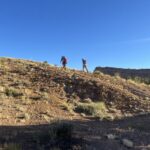
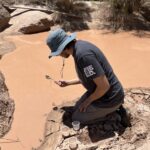
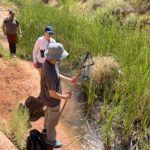
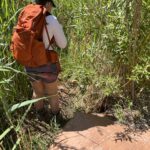
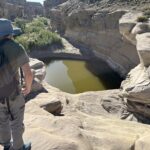
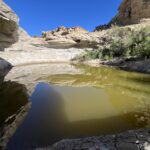
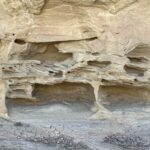
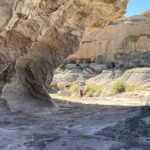
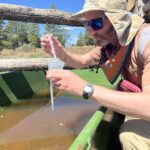

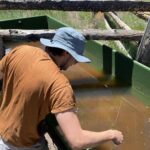
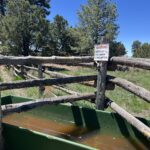
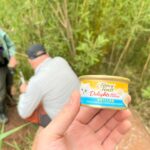
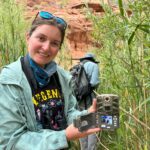
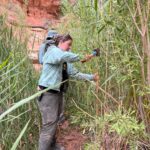
You must be logged in to post a comment.